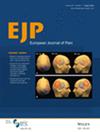Correlates of chronic pain onset and recovery in the CoLaus cohort
Abstract
Background
Only few previous cohort studies examined simultaneously predictors of chronic pain (CP) onset and recovery. Furthermore, these studies used various sociodemographic and pain-related characteristics, without standardized measures of sleep and depression. The present study aimed at expanding and strengthening these findings in a large Swiss population.
Methods
We analysed data from a longitudinal cohort (n = 4602) collected at two time points separated by 5 years in Lausanne, Switzerland. We studied through two independent multivariable logistic regression models, the predictors of CP onset and recovery, including socio-demographic data as well as standardized measures of sleep and mood.
Results
Chronic pain was reported by 43.1% and 44.4% of participants, with 11.6% at the second follow-up reporting moderate or intense pain. Neuropathic pain, regardless of intensity, had a more negative impact on quality of life. An inferential model (n = 1331) identified the male sex as predictive for recovering from CP. Older age, being overweight or obese (compared to normal weight), higher depression scores and pain medication intake were predictive for sustained pain at the second follow-up. A second model (n = 1886) identified being overweight or obese (compared to normal weight), low quality of sleep and being a former smoker (compared to a non-smoker) as predictive for developing CP, while the male sex was lowering the risk.
Conclusions
While sex and weight are associated with both recovery and new CP onset, separate variables also need to be considered in these processes, underlining specific factors to be addressed, depending on the context, whether preventive or therapeutic.
Significance Statement
Multivariable models in a Swiss cohort (N = 4602) associate male sex, not taking pain medication, normal weight, lower depression scores and younger age with recovery from chronic pain, while females, obese or overweight, having worse sleep and former smokers are associated with onset of new chronic pain. These common and separate factors need to be considered in treatment and prevention efforts.


 求助内容:
求助内容: 应助结果提醒方式:
应助结果提醒方式:


